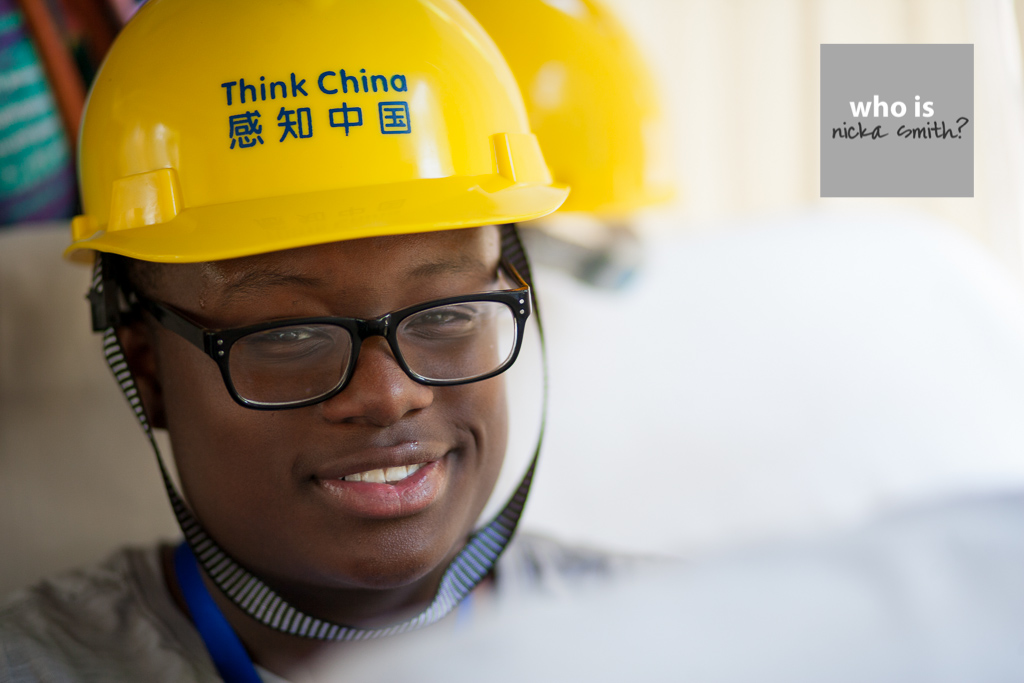Day 10’s collaborative blog post was written by Jordan Williams [JW] and Isaiah Mobley [IM], two of the splendid 13 who are part of Think China 2013.

[JW] Some of China’s ethnic groups inhabit vast areas while others live in individual compact communities or live in mixture. This reminded me of Oakland, because Oakland is like a community filled with minorities. Bryce Bell said “The lecture reminded me of being in Oakland, seeing minorities everyday and especially ones that live in poverty.” The origins and development of ethnic groups in China are diverse and have been shaped by local conditions which is kinda how Oakland is.
[JW] To help with minority issues, China has political polices. The first policy is regional ethnic autonomy. This is a basic policy that China adopted to handle problems among its ethnic groups. The second policy is adherence to equality and unity among ethnic groups. This policy provides protection of the personal freedom ethnic minorities and opposes ethnic discrimination or oppression of any form. Also, with this policy ethnic minorities religious beliefs are respected and protected. I believe that these help the ethnic minorities, because it helps them feel like they still have a life, and are not belittled by everything they do. The fourth policy is to development ethnic minority cultures and build agriculture.
[JW] I asked LaKeshia Harris how she felt about minorities. She said “Nobody should be judged by the color of there skin. Minorities should be spread apart, and not have to live in one compact area.” I agree with Lakeisha. Minorities shouldn’t be judged because of their skin color; everyone should be equal.
[JW] I feel that the lecture was interesting. It was nice to talk about an issue that was going on in the United States. It shows that China and the United states are not that different and have similarities. This lecture really opened my eyes to see that China is more than what the American perception is. China does do what they can to help the ethnic minorities have equality.

[IM] When we arrived at the plant, we saw a big box that had Coca Cola written across it in gold writing. Next, we went up stairs to see the area where the sodas where made. We got to see how the bottles were made and how the soda was put into the bottles.
[IM] There was several machines making sodas. One of the machines was called the 600 line because it can produce 600 bottles in one minute. The machines were all named after how many bottles they produce in one minute.
[IM]”I found it interesting how they can produce so many drinks with little or to no errors using machinery. I expected the machines and facility to be bigger because of the number of sodas that were being produced” said Rahni Johnson.
[IM] The first assembly line of Coke factory was started in 1981 in Beijing. In 2011, it was estimated that there was an average of 152 bottles consumed by one person in Beijing.
[IM] Brandon Vonderwerth-Martin said “It was cool how fast the machines were going and how fast the whole process of creating a bottle of soda was. It was also interesting to see how many different types of drinks that they produced in one factory.” The factory produces 130 thousand boxes and roughly three million bottles during one day of work. The plant employees work 24 hours in shifts.
[IM] In 1886, John Pepton created the ingredients for Coca Cola. In 1899, the Coke was first put in a bottle for sale. In 1915, the famous glass bottle was designed with it’s curvy shape and in 1929, Coke sponsored its first Olympic games.
[IM]”I liked how they showed the history of and how it progressed to becoming one of the biggest beverage companies world wide today” said Ibrahima Mobley.
[IM] In the 1980’s, it was difficult to buy and find Coke bottles in China because China was against foreign affairs during that time period so they weren’t really getting imports or exporting goods to other countries. Later, China lifted the ban on foreign imports which opened the floodgates for companies like Coca Cola to begin producing their products there.
[IM] Overall the experience was a once in a lifetime opportunity and it was also spectacular to see how effortlessly the workers had to work.